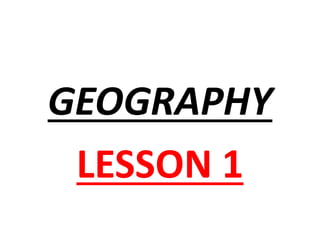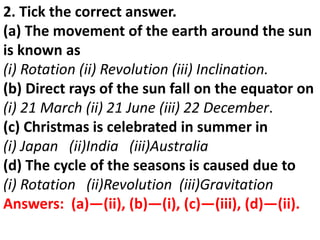The document provides information about maps and geography. It defines key map terms like scale, cardinal directions, components of a map, and how symbols are used. It distinguishes between different types of maps like physical, thematic, and political maps. Maps are explained to be more useful than globes for studying specific areas due to their level of detail. Thematic maps provide detailed information on topics like forest distribution. A compass is used to find main directions, and a scale is necessary for maps but not sketches or symbols.


















